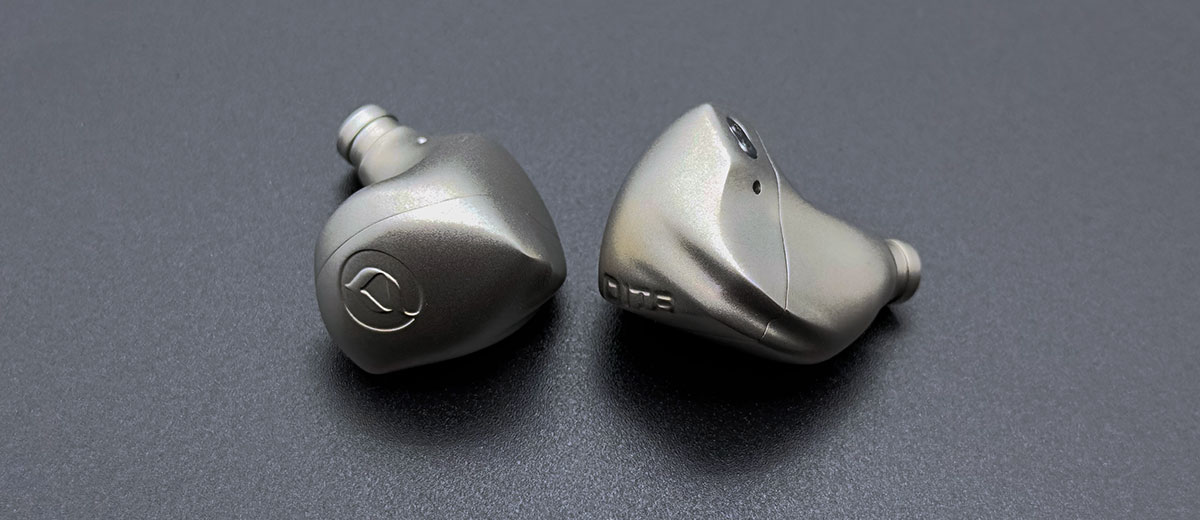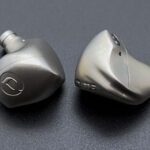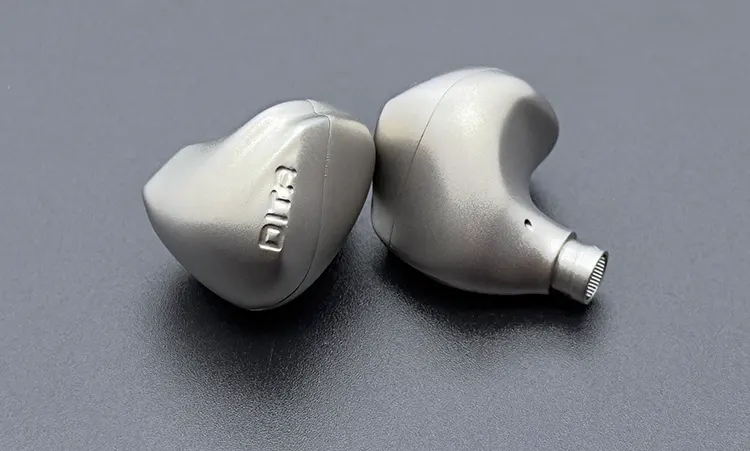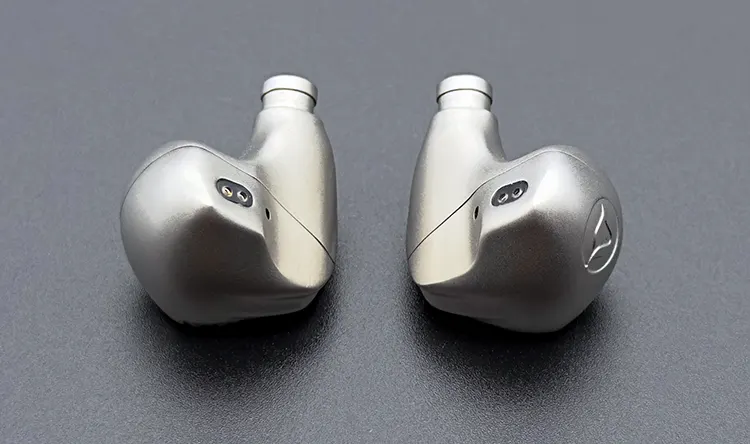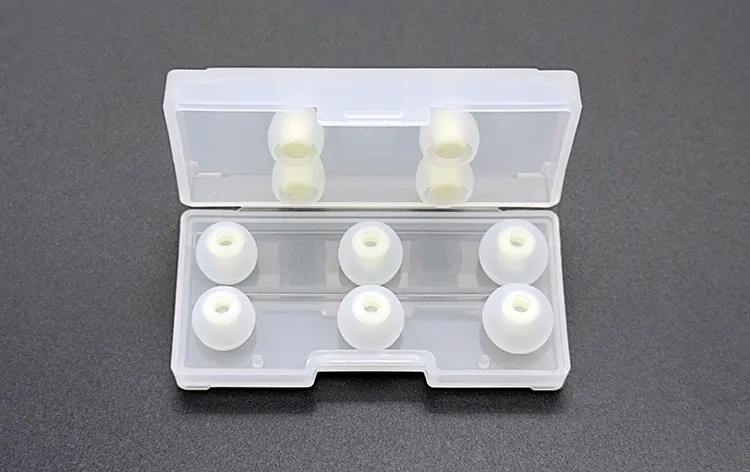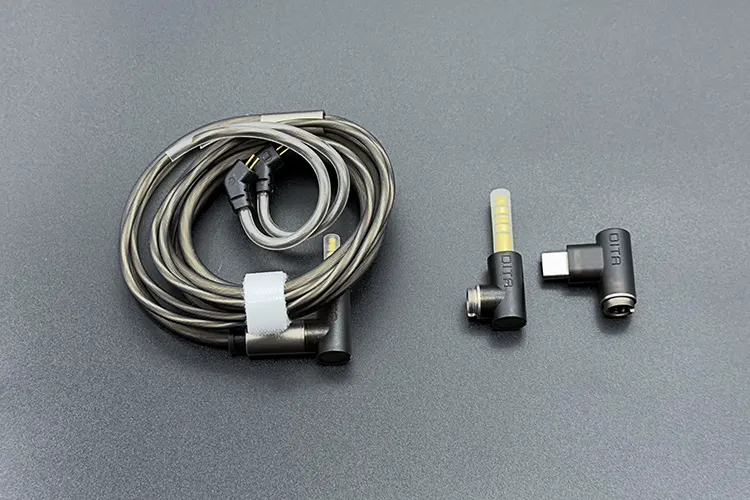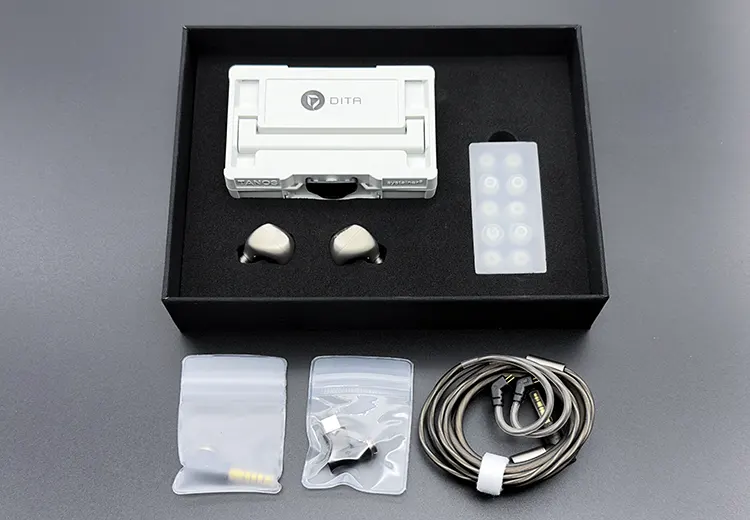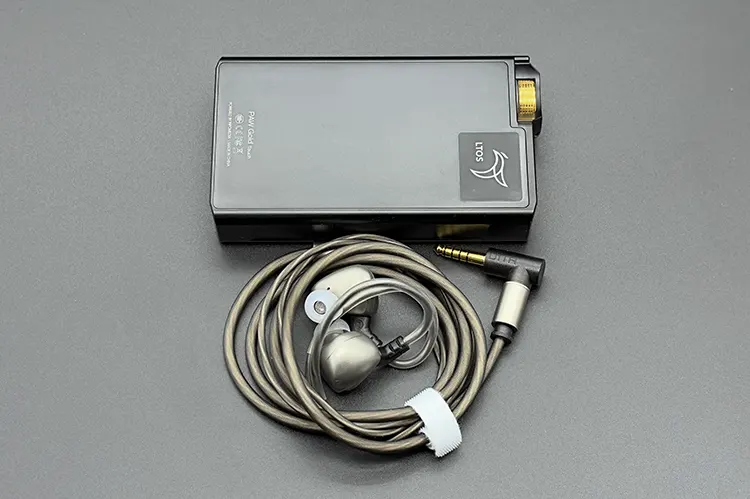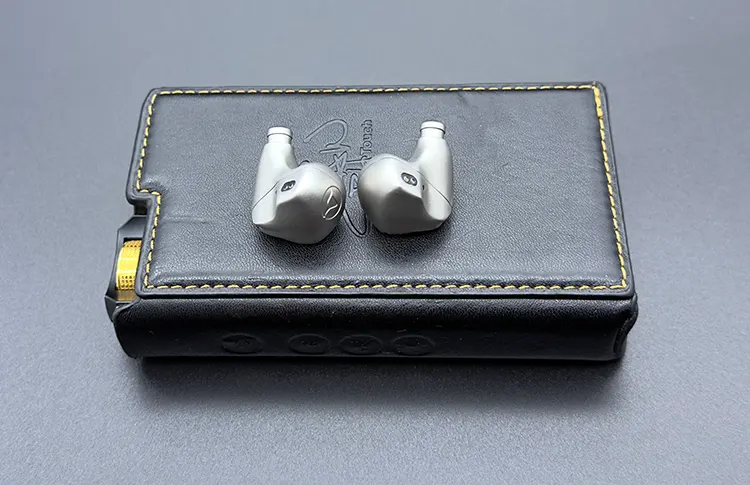In this feature, Nihal reviews the DITA Audio Mecha, a 10mm Lithium-Magnesium or LiMa-Carbide dynamic driver in-ear monitor priced at $899.
Disclaimer: This sample unit was sent to me in exchange for my honest opinion. Headfonics is an independent website with no affiliate links or services. I thank the team at Dita Audio for their support.
Click here to read more about DITA Audio products we previously reviewed on Headfonics.
This article follows our current scoring guidelines, which you can read in more detail here.
Following the success of its previous release, Project M, Dita Audio of Singapore is back with a new single dynamic driver IEM called Mecha.
They have also introduced some cool variants of Project M after its well-received launch. Priced at $899, the Mecha is another premium offering from the brand.
Previously, they released the DITA Perpetua, a flagship single-dynamic driver IEM that is no longer in production. However, Perpetua received its fair share of appreciation and love from the community.
In this review, we will take a deep dive into Mecha’s tuning and compare it with other IEMs in its price range to assess how it stands against its competitors.
Features
At the core of Mecha lies a single 10mm LiMa-Carbide dynamic driver with a dual magnet setup. The LiMa-Carbide driver consists of a 9mm lithium-magnesium diaphragm surrounded by a 1mm carbide diaphragm.
DITA notes that the Li-Ma diaphragm is much harder to fabricate than materials like lithium-aluminum or pure aluminum. This driver combination helps achieve greater extension, a clean presentation, and a non-intrusive bass range.
The driver is carefully mounted onto the earphone’s titanium chassis, positioned as close as possible to the sound output nozzle to minimize tunnel reflections.
Additionally, there is a special venting system with dual vents on the shells that helps in achieving a well-balanced frequency response and tonality.
Design
With Mecha this time, DITA has embraced the titanium trend with an undeniably premium and robust build quality.
Unlike some other IEMs, such as the LETSHUOER Cadenza 12 2024, which have highly polished, mirror-like finished shells that are prone to scratches and fingerprints, the Mecha features a slightly matte finish. This makes handling the shells much easier.
The IEM connects via a 2-pin 0.78mm socket. Interestingly, the flush 2-pin sockets are slightly angled, enhancing comfort.
The shells are quite ergonomic in shape, without any edges or bumps around the curves. One shell has the brand name “DITA” embossed, while the other carries its logo. For those who admire minimalist design, the Mecha will satisfy them.
Comfort & Isolation
The Mecha is extremely comfortable to start with. The shells are on the heavier side compared to usual resin or metal shells, but the shape is quite ergonomic, which helps in achieving a snug fit.
I do not find the shells big or bulky. The corners are smooth, and the shells do not press on any point of the ears, making them quite comfortable for longer sessions.
The nozzles on the IEMs are on the smaller side and come with a lip. Choosing the right set of ear tips is a rather straightforward job with these nozzles. The shells do not protrude much when worn.
With the perfect ear tips, I find the isolation level very decent, blocking a substantial amount of external noise. The dual venting system helps minimize pressure levels during prolonged usage. Additionally, I haven’t experienced any driver flex with these IEMs.
Ear Tips
I am glad to see that the glow-in-the-dark ear tips provided with Project M are back with the Mecha. Under normal lighting, these ear tips appear white and translucent, while under low light, they glow in a fluorescent green color.
This perfectly blends with Mecha’s color scheme. These ear tips are available in five different sizes: SS, S, M, L, and LL. In terms of fit, I find the M and L sizes fit quite well.
While I do not have any complaints about the quality of these ear tips, DITA should have added a bit of variety by mixing wide-bore and narrow-bore ear tips, as many brands do.
I tried some third-party ear tips, such as SpinFit Omni and Divinus Velvets; the wider bores in these ear tips produce a more balanced sound.
Stock Cable
Mecha includes a custom-designed Churro cable, crafted from monofilament single-crystal, high-purity copper with silver-plated conductors.
The outer layer is built in a tangle-free, soft-touch TPE sleeve. The material provides an excellent blend of flexibility, durability, and resistance to wear.
This design deviates a lot more from the traditional cables that we often see. The cable reminds me of the stock cables from Sennheiser IE 900 and Sony IER-Z1R. With minimal microphonics and a comfortable weight, I find this cable quite satisfying to use.
This cable is also equipped with DITA’s APV2 (Awesome Plug Version 2), which gives it the modularity of a 3.5mm single-ended, 4.4mm balanced, and USB Type-C plugs. You can change the plugs easily by unscrewing them. All these plugs come in an L-shape.
The notable feature of the USB Type-C plug is its minimal power drain, which, in comparison to market alternatives, consumes less power.
Additionally, this Type-C connector differentiates itself with class-leading sample rates of up to 384KHz/32bit and an extremely low noise floor.
Packaging & Accessories
DITA’s unboxing experience has always been enjoyable, and the Mecha is no exception. It shares some similarities with the previous release, Project M, featuring a similar packaging style and a few common accessories.
The outer sleeve stands out with its bright neon color, displaying “MECHA” in a circuit-like font, possibly inspired by robotic aesthetics.
Removing the outer sleeve, we get a slim, lightweight black box with an elegant, minimalist design. The box has a unique texture that sets it apart from standard paper packaging and features the DITA logo on top.
Upon opening the box, we are greeted by the IEMs and accessories, neatly arranged in a foam cutout. The sturdy foam provides excellent protection, keeping everything secure and intact.
Alongside the IEMs, the package includes a carrying case, a set of ear tips, some stickers, and a booklet with information about the IEM. The cable and its plugs are stored inside the Tanos case.
The neon stickers add a quirky touch that complements Mecha’s futuristic design theme. The overall presentation gives a premium and modern impression.
Carry Case
DITA Mecha includes the same Tanos-branded systainer case as Project M. The case has a compact design that fits in your palm or pocket.
The case is quite lightweight as well and features removable, custom-molded silicone inserts for extra protection. Additionally, the lock mechanism provides additional security against accidental openings.
The case does not have enough space, and to be honest, I avoid storing the IEMs and the cable inside it, fearing that the pressure might break something. Even for Project M, the space looks cramped.
Sound Impressions
The following sound impressions of the DITA Audio Mecha were completed using a mixture of my main source, Lotoo’s Paw Gold Touch, and occasionally the Questyle CMA18P. I paired the IEMs with stock cable (4.4mm balanced plug) and the SpinFit Omni ear tips.
Summary
The Mecha is an unapologetically bass-forward IEM, delivering powerful, bold low-end without overpowering the midrange or higher frequencies. Its tuning leans toward a musical presentation, featuring a natural and rich midrange.
The treble is smooth yet detailed, striking a balance between clarity and warmth. The Mecha doesn’t compromise on technical performance, thus making it a well-rounded choice for those who prioritize fun and excitement in their sound.
Bass
The Mecha’s bass is a true highlight. It stands out for its weight and punch while preserving higher-frequency clarity. On Mecha, you get a primary focus on a deep, rumbling sub-bass with a boosted mid-bass.
This bass is very detailed and possesses a texture and layering that allows you to hear the subtle vibrations and nuances. There is excellent clarity, with basslines from multiple instruments distinctly separated and well-defined.
The bass notes have a natural decay, fading out smoothly without lingering too long or being too slow. There is a tightness and firm control, which gives it a natural, lifelike feel. The extra punch makes the low end very enjoyable.
On some bass-heavy tracks, the bass approaches boomy territory but is never bloated or overwhelms, maintaining a well-controlled and balanced presentation.
Midrange
In the midrange, the Mecha showcases a lot of emotion and naturalness. The midrange is prominent, with a slight forwardness and fullness with a pleasing level of warmth, creating an immersive and engaging feel. Despite a bass-heavy tuning, the bass does not intrude much into the midrange, keeping it clean.
The bass shelf adds substantial body and thickness to the lower midrange, making it lush and full. The notes have significant weight and possess delightful density, yet there is an impressive level of clarity, and the details come through very well.
The vocals feel intimate and natural, with both male and female voices carrying ample body and extending effortlessly without thinning out. Midrange instruments like guitars, pianos, and strings exhibit a lifelike timbre.
The forward and slightly sharp upper midrange might bother some, but I find it enjoyable. It provides a natural extension to the midrange and blends seamlessly with the higher frequency region.
However, I find the Mecha somewhat unforgiving to poorly recorded tracks due to the energy and sharpness in the upper midrange.
Treble
The treble on the Mecha perfectly complements its tuning style. Tuning the right treble on a single dynamic driver can be challenging, as it can sometimes become too dark or overly bright.
The Mecha has nearly hit the right spot. It’s one of those treble tunings where you get most of the details without them being overly aggressive. It offers a smooth treble presentation with the right amount of energy, making it enjoyable for long sessions without fatigue.
The treble notes reveal plenty of detail, with enough air and sparkle to ensure that nothing feels missing. Towards the upper treble region, I think adding more details and air would enhance the experience, as it rolls off slightly, but it doesn’t leave much room for complaints.
Even in a complex mix, the notes from various instruments unfold well and do not blend into each other, showcasing excellent separation. Sounds from cymbals and hi-hats feel natural, exhibiting a pleasant decay without sounding splashy or metallic.
Staging & Dynamics
With the Mecha, we get an immersive holographic soundstage that, while not exceptionally wide, offers excellent depth. I long for a bit more width, but there’s not much to complain about.
Instrument separation is good, providing ample space for instruments to shine, though it could be slightly better. The layering is quite decent; even in busy tracks, the instruments and vocals remain distinct, preventing overlap or congestion.
The boost in the upper midrange and lower treble region enhances its imaging capabilities, contributing to a well-defined spatial arrangement within the stage.
The resolution could be a touch better, though micro-details come through very well, and I don’t find myself missing much. Honestly, I didn’t expect the Mecha to be a technical monster. For an IEM that leans toward musicality with a prominent bass presence, the level of technicality is spot-on.
Click on page 2 below for my recommended pairings and selected comparisons.

